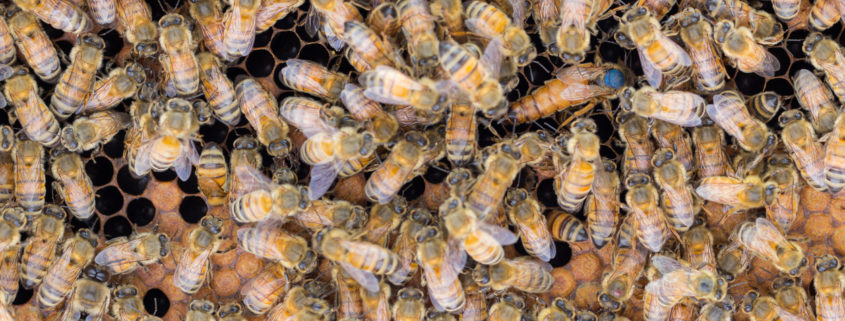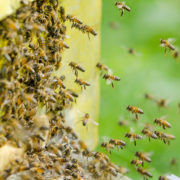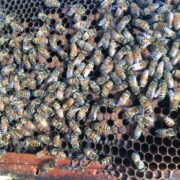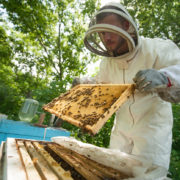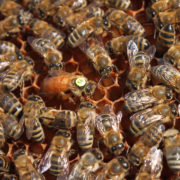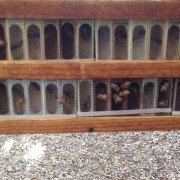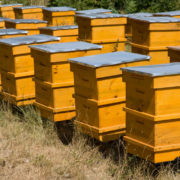A Queen’s Unique Scent
Those of us who live closely with others know that each individual person carries his or her own distinctive scent. An attentive partner can often pick up their partner’s scent in their clothes, their bedding, or even in their living space. If you are living closely with someone, you very quickly get to know that person’s unique scent. It becomes a part of your world, and you grow comfortable with it.
The same is true for a colony of honeybees and their queen. Most beekeepers are aware that all queens carry a special “queen pheromone” that distinguishes the scent of a queen bee from a worker bee. It is obvious simply from watching basic honeybee behavior that the worker bees are quickly able to identify the queen bee, and it seems equally obvious that a pheromone is driving the behavior. What is less well known, however, is that beyond this general queen pheromone, each individual queen has her own unique pheromone or scent, which is distinctly individual to her, and her alone.
When a swarm is presented with two queens at a distance, one of which is their own and the other an imposter, the swarm will always select its own queen and will attack the imposter. It instantly recognizes the unique pheromone of its own queen even though both, obviously, smell like queens. One smells like their queen and the other does not.
One might think that a queen’s unique pheromone signature might be driven by the fragrance of the blossoms that the colony is foraging in. While this is somewhat true, it is only part of the picture. For example, if a colony has been foraging on sage blossoms, the colony and the queen might begin to take on the aroma of sage. This effect, however, is only an enhancement to the underlying scent, which remains unique and inherent in each individual queen. Scientists have proven this by removing a colony’s queen, exposing her to a strong but different scent, and then reintroducing her to her colony. The bees still recognized their queen’s underlying pheromone, even though it appeared to have been overwhelmed with a different scent.
What does this mean for a beekeeper? A conscientious beekeeper must be aware that any new queen is always going to smell differently than a previous queen, and the bees will know this immediately. Don’t be fooled, they are going to recognize this each and every time. This is why we beekeepers use queen cages and sugar candy to slow a queen’s introduction, to allow time for the colony to grow accustomed to their new queen’s unique pheromone signature. It is also why it is often good advice to not disturb a colony shortly after a queen introduction. When a new queen is becoming established in a colony, the hive requires a certain amount of time to become intimate with that queen’s unique pheromone, and to claim that queen and her pheromone as their own. Any disturbance that disrupts the transmission of this new pheromone can potentially create confusion inside the colony, possibly resulting in the colony mistakenly identifying the new queen as an imposter, and thus attacking her.

